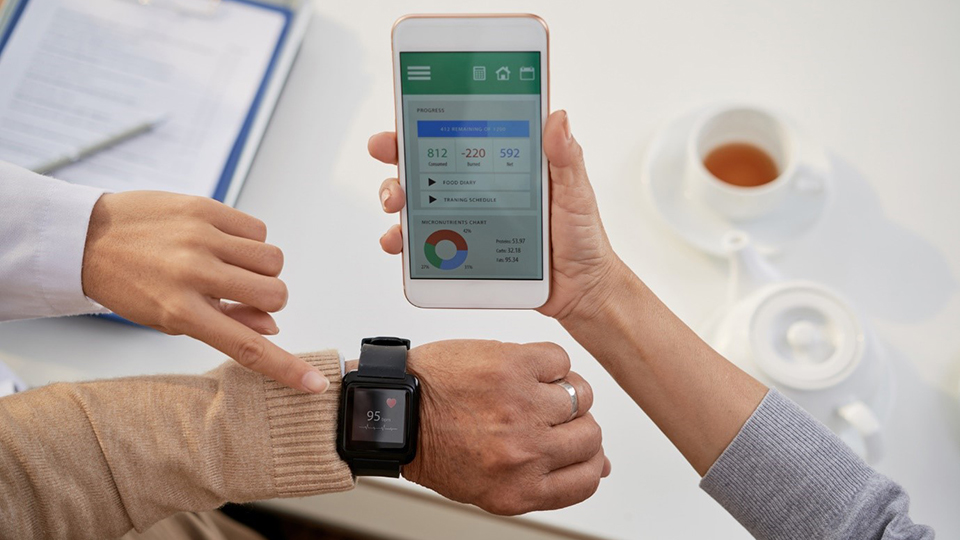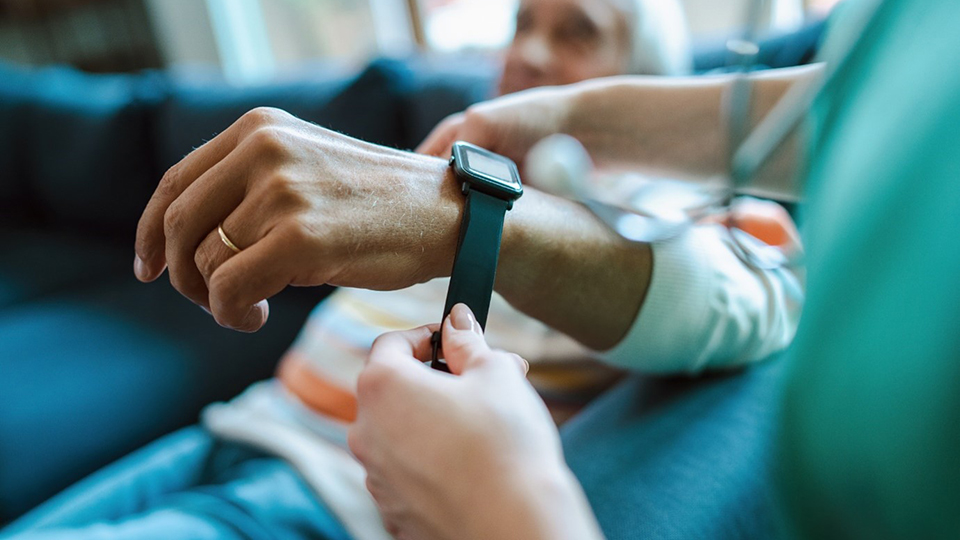Innovative Medical Wearables to Reduce Burden of Non-Communicable Diseases
June 28, 2024
Medical wearables hold immense potential for tackling chronic diseases and improving global health outcomes. Strong intellectual property (IP) can safeguard medical innovation, promoting high-quality devices, and protecting users from counterfeit or substandard products.
What are medical wearables?
Medical wearables are non-invasive devices that are worn to monitor physical activity and physiological biomarkers to encourage healthy lifestyle changes. They provide remote monitoring to support personalized healthcare and telemedicine and can also enable autonomous management of health by consumers outside of healthcare settings.

The health-monitoring features of wearables have come a long way from traditional fitness bands, smart watches, and rings. These devices used to provide general health information such as blood pressure, heart rate, temperature, and step count. Now, smart watches are equipped with Electrocardiogram (ECG) sensors. These sensors allow users to perform self-testing and even receive an automatic interpretation of their results. The Apple Watch Series and FitBit Sense are examples of smartwatches with ECG capabilities.
In addition to basic health monitoring, wearables can now assist with advanced functions like stroke prevention, physiotherapy, smoking cessation programs and diabetes management. Innovators are also developing miniaturized health wearables that seamlessly integrate into our daily lives. These ultra-thin, comfortable devices can take many forms, including adhesive skin patches, glasses, contact lenses, shoes, belts, headsets, and even smart clothing.
A 2021 WIPO report highlighted that wearable technology made significant contributions across assistive technologies: 52% of vision tech (smart glasses), 50% of self-care tech (adaptive clothing), and 31% of mobility tech (orthotics). It also flagged concerns regarding data privacy, accuracy of health monitoring, and regulations for these rapidly evolving technologies.
Can medical wearables assist in reducing the global non-communicable diseases (NCDs) burden?
NCDs are a global health threat, accounting for 74 % of all deaths worldwide. These chronic conditions have a significant financial cost, with the five leading NCDs – cardiovascular disease, chronic respiratory diseases, cancer, diabetes, and mental health conditions – estimated to cost the global economy US$ 47 trillion between 2010-2030.
Medical wearables are emerging as a tool to fight against NCDs. Studies suggest that they can be effective in monitoring and managing physiological parameters like body mass index, blood pressure, blood sugar and respiratory health. They can also prevent and manage emergencies such as falls and strokes and reduce the prevalence of psychosocial conditions like depression and anxiety. This in turn reduces demand for treatment and hospitalization, translating into significant cost savings.
The potential cost savings from remote patient monitoring, including wearables, are noteworthy. As an example, remote sensor monitoring can save the Swedish healthcare system € 3 billion every year by 2025. Europe as a whole could potentially save up to € 50.6 billion and 336.1 million hours annually. Even focusing solely on heart failure detection through wearables, potential savings of € 36.9 billion are projected for the European health systems due to reduced hospitalization. By 2040, the global healthcare industry might see cumulative cost savings of approximately US$ 200 billion from remote patient monitoring, including through medical wearables.
Medical wearables also extend the reach of healthcare beyond cities. People living in remote and underserved areas, who might have to travel long distances for basic checkups, can benefit from remote monitoring and diagnostics. Wearables can also collect and share health data, improving access to high-quality care. Further, they can accelerate medical research by collecting health data of subjects, who can participate from the comfort of their home. This necessitates close attention from innovators, policymakers and lawmakers to ensure personal data protection frameworks are in place and in compliance with national and international regulation.
Some of the recently introduced medical wearables incorporate other sophisticated functions that prevent and manage specific NCDs. Yale University technology spinout Alva Health has a patented wearable device that detects signs indicative of stroke, while FitBit’s patented technology claims use of machine learning in a wearable device to determine mental health and cognitive state. Smoking cessation efforts are also getting a boost from medical wearables, with wearable sensors that can monitor smoking activities and trigger timely interventions.
Can wearables help in treatment of NCDs?
Medical wearables are evolving beyond monitoring and diagnosis. They are becoming treatment tools as well. For example, Cala Health’s wearable can treat hand tremors in patients suffering from Parkinson’s disease and essential tremor disorder. FeetMe’s insoles can improve gait and balance for physiotherapy interventions and the management of work injuries. Wearable insulin pumps and continuous glucose monitors can help in the treatment of diabetes.

Medical wearables and the role of IP
The medical wearables market is fast-growing, expected to reach US$ 156 billion by 2024. IP is crucial for the safe and sustainable growth of this market. Concerns have been raised with respect to IP protection of wearables, specifically regarding low-quality patents, potential increase in patent disputes, and data protection. These warnings seem prescient, with a rise in wearable and medical devices disputes, including patent infringement, product liability and regulatory compliance disputes.
In the United States, patent litigations for wearables and medical devices rose from 36 in 2022 to 55 in 2023. Contract disputes have also more than tripled, from 6 in 2022 to 21 in 2023. Adding to the concerns are reports of counterfeit wearables, posing a double threat: commercial harm to innovators and potential security risks for users, such as malware and compromising health data. To navigate this evolving landscape, sound legal strategy is essential to protect IP and user data, safeguarding the health and privacy of consumers.
Medical wearables operate at the convergence of technology, personal privacy, and the human body. To ensure this innovation translates to public health improvements, strong IP is vital. If innovators build strong IP portfolios, it will strengthen their capacity to enforce their rights against infringement and counterfeiting and protect the public.
Strong IP fosters innovation
In conclusion, medical wearables represent a significant paradigm shift in the management of NCDs. While their potential to empower individuals to proactively monitor their health for early intervention warrants further exploration, the current trends suggest that medical wearables can help in the fight against NCDs. This focus on prevention holds the key to a healthier population and a more sustainable healthcare system.
Strong IP rules can foster further innovation and help to ensure that high-quality devices reach patients. WIPO plays an important role in supporting this vision. By facilitating discussions and knowledge sharing among Member States and stakeholders, WIPO promotes a balanced and effective global IP ecosystem that works for innovators and patients.